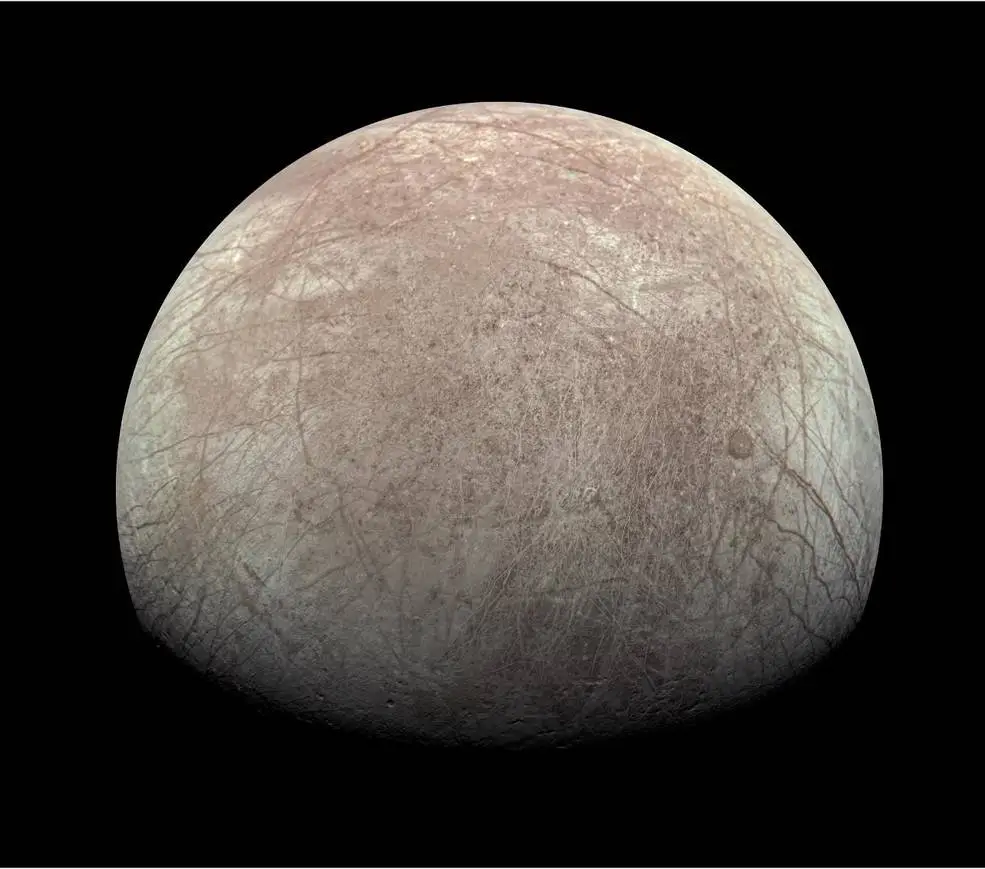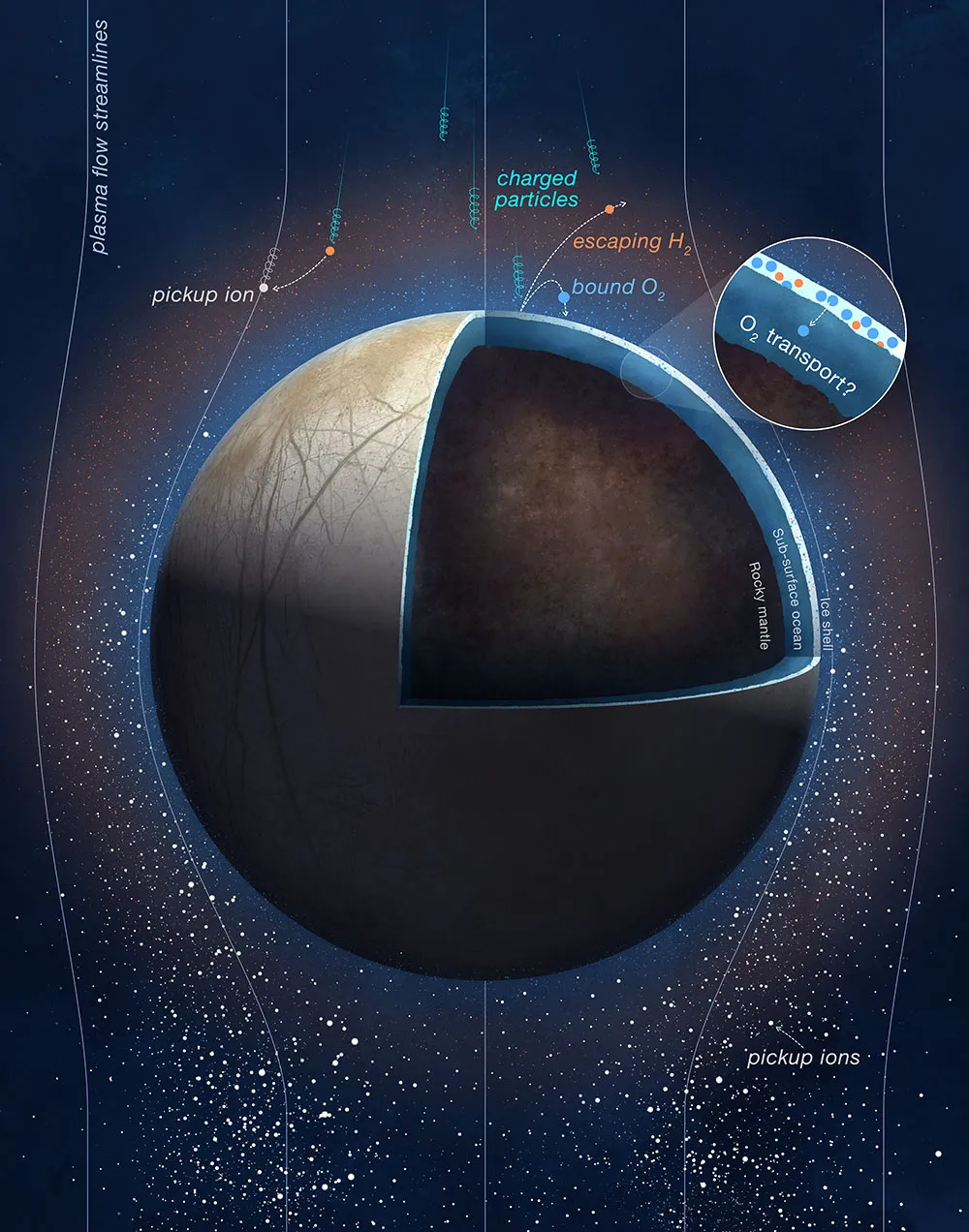Using data collected by the Juno probe, astronomers have determined how much oxygen is formed on the surface of the Europa moon. These data are important for assessing its viability.

Europa is the fourth largest moon of Jupiter. Its surface is completely covered with ice, which hides a giant ocean containing more water than all terrestrial reservoirs combined. The question of the viability of this ocean has been a long-standing subject of scientific debate. One of the key factors is the presence of oxygen in it, which can be used in metabolic reactions.
Oxygen can enter Europa’s ocean from the surface. It is constantly bombarded by charged particles from Jupiter’s radiation belts, which split water molecules. The main question is how much oxygen is produced in this way.
Until recently, scientists had diametrically opposed estimates: from a kilogram to more than 1,000 kilograms per second. But Juno’s mission helped bring clarity. In 2022, the spacecraft performed a close flyby of Europa. The JADE instrument installed on board was able to determine the concentration of hydrogen and oxygen ions, which were created by bombarding moons with charged particles and then picked up by Jupiter’s magnetic field. This made it possible to determine the production of oxygen. It is 12 ± 6 kg per second, or 1000 ± 500 tons per day.

According to the researchers, these data provide a “narrower range” for life support. At the same time, scientists do not yet know how much of this oxygen reaches the ocean of Europa. The Europa Clipper mission can provide the answer. It will be launched this autumn, it will have to reach Jupiter and begin exploring Europa in 2030.
According to https://www.nasa.gov
Follow us on Twitter to get the most interesting space news in time
https://twitter.comne/ust_magazine


